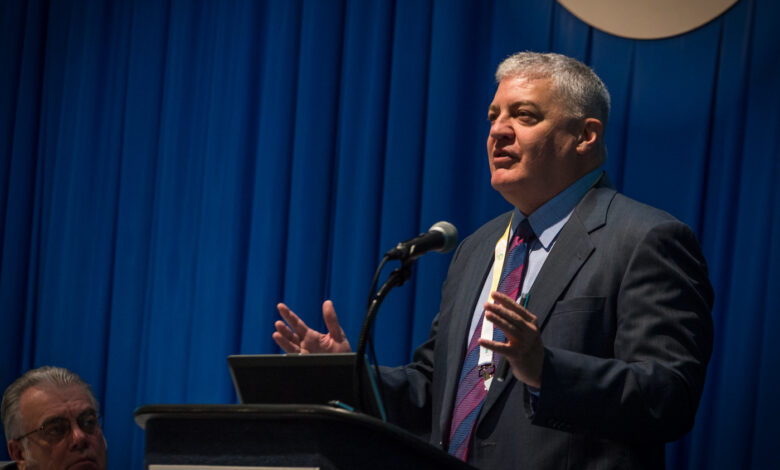‘Big leaps’ vs incremental change: Industry must look to outside collaboration

By Linda Hsieh, Managing Editor, and Alex Endress, Editorial Coordinator
On the spectrum of scientific research, some types of R&D have high levels of applicability – think of Thomas Edison inventions – while others are geared toward humans’ quest for fundamental understanding – think of the work of Nobel Prize-winning physicist Niels Bohr. The oil and gas industry has historically placed most of its attention on the former – using proprietary methods to produce incremental change, James Dupree, BP Chief Operating Officer for Reservoir Development and Technology, said on 4 May at the 2015 OTC in Houston. However, looking to the future, he urged the industry to dedicate more time and resources to a different category of research – those that fall into Pasteur’s Quadrant. “When you think about Louis Pasteur, you think about leaps in technology, big changes and big fundamental moves,” Mr Dupree said.
In deepwater, BP is not only pushing forward with Project 20K, but it’s also looking at ways to do longer tiebacks and methods of wirelessly communicating with equipment on the seafloor, including the BOP. “We also like to think about ROVs,” he said. “Could we have resident ROVs on the seabed? Could we get rid of tethering to a vessel and getting a resident ROV on the seabed that works there all the time that’s operated remotely?”
Seismic imaging is another area Mr Dupree cited. Here, BP is switching from using towed streamers for deepwater seismics to placing autonomous nodes on the seafloor; this has been enabled by the use of military-grade ultra-short baseline positioning systems. Technology sourced from the Norwegian fishing industry could also potentially allow BP to place these nodes on the seafloor without the use of an ROV. Such examples highlight the importance of collaboration, not only within the industry but also with other industries and academia. “We can’t do everything proprietarily inside. We need collaboration,” he emphasized.
This type of outward engagement will become especially critical in the area of data analyses and management. With more sensors being deployed across all types of oil and gas equipment, terabytes upon terabytes of data are being collected every day. Not only will the industry need to be able to store this huge amount of data, it will need advanced data analytics technologies in order to use it to drive performance improvements. In drilling operations, in particular, human interaction with the data will be key, and Mr Dupree compared this to flying a fighter jet. “You’re going to need adviser tools that allow you to understand and provide advice to human beings, and you’re going to need response options.”
He urged the industry to collaborate with and learn from companies in the Silicon Valley – experts in cloud computing such as Google – in order to prepare itself to manage the increasing amounts of data coming in. “We’re going to have to develop systems to get the right data to the right person at the right time… That’s going to be a big part of our future.”
At BP, high-speed computing is already playing a big role in advancing material sciences by providing cutting-edge simulation capabilities; its Houston Center for High-Performance Computing has increased its computing power from approximately 2.2 petaflops in late 2013 to approximately 3.8 petaflops now. “We can simulate now – in our high-speed computing center – how a certain material is going to act in a certain environment,” he explained. For example, BP can take chips of rock and build its pore structure using computing power, then test it for electrical properties and capillary pressure – all without ever having a core and without going into a lab. “Soon, because of our high-speed computing capabilities, we’ll go dynamic with the same type of technology so that we can calculate relative permeability,” he said.
Collaboration also will be critical to help the industry to shorten technology development cycles – particularly critical in today’s lower oil price environment. Take low-salinity EOR technology as an example – a technology that BP is now using on both Mad Dog in the Gulf of Mexico and Clare Ridge in the UK North Sea. “It’s an engineered solution in waterflooding now, but it took 20 years,” Mr Dupree remarked. “In the future, we just won’t be able to take that kind of time. We have to close these cycle times.”




